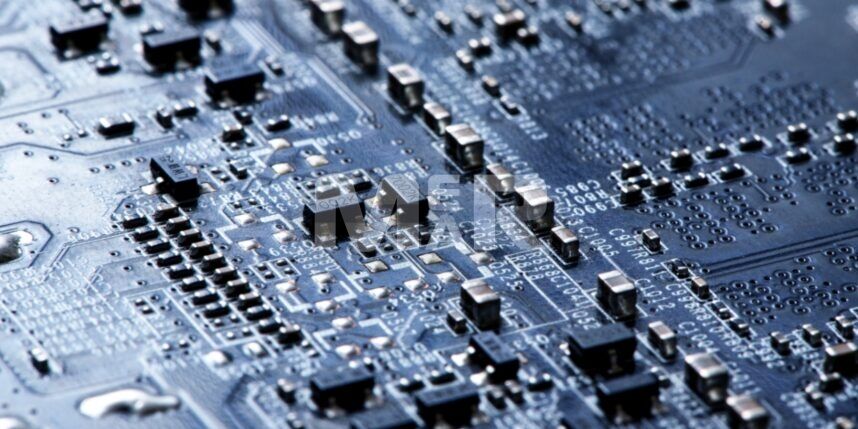Ways To Avoid On Board Noise In High Speed PCB’s

In this modern world of digitalization, speed is the prime and basal factor that adds up to product performance at large. Herewith, the multitude of electronic designs is stuffed with a lot of high-speed interfaces in addition to the intensified signal speed that the layout and traces of the printed circuit board act as the fundamental foundation element of the system performance as a whole. The rising enrichment in electronic innovation has resulted in increased demand for high PCB manufacturing and PCB Noise Reduction Technique. Noise on the printed circuit board is the chief deterrent to the overall system performance. This blog highlights the ways and means to reduce onboard noise in high-speed PCBs.
The PCB design ensuring a level of up-gradation in delivering reliability should set out low level and nominal on-board noise in the PCBs. Acting as a prime vital stage to get a tough, noise free, high-performance PCB assembly service, PCB designing is in the mainstream. For this, the factors of significant concerns include effective circuitry design, issue of interconnecting traces, parasitic components, decoupling and grounding techniques for effective PCB Designing. Above all leads the sensitive structuring and mechanics of the traces- The ground loops and ground noise, stray capacitance, high circuit impedance, transmission lines and embedding traces. For the high frequency requirements that have fastest signal speed in the circuitry, the PCB design aspects should involve the above-mentioned significant concerns for a reduced level of noise that in turn gives a durable high-performance PCB solution.
PCB Noise Reduction Techniques
Noise in PCB may adversely affect the PCB performance with the fluctuation induced in the voltage pulse and in the shapes of the current. Take a read to the few preventive steps on avoiding the blunders that can help in enhanced functioning and put a stop to noise in the high-speed PCB.
1. Reduce Crosstalk
Crosstalk is a superfluous inductive and electromagnetic coupling between the wires, traces, cable assemblies, and elements related to electromagnetic field distribution. Crosstalk significantly depends on the technique of routing traces. There is a reduced chance of crosstalk occurrence when traces are routed side by side. In case the traces are routed parallel to one another, it is more likely to initiate crosstalk if the trace segment is not kept short. Other ways to avoid crosstalk are the reduced dielectric height and wider space between the traces.
2. Strong Signal- Power Integrity
It is prudent for the PCB design expert to cautiously consider the Signal and Power Integrity mechanism along with the analog features of the high-speed PCB design. One of the key design concerns for high-speed SI is the right selection of the transmission line for the PCB design depending on the requirement of the exact signal speed, the driver IC and other design complexities that can help to avoid onboard noise in PCB with rapid signal speed. Power Integrity (PI) also acts as a vital part in achieving the required protocols of high-speed PCB design with reduced noise and a constant level of stable voltage across the chip pads.
3. Prevent Cold Solder Joints
The inaccurate welding process can cause cold solder joints. Cold solder joints can cause problems such as erratic cut outs, static noise and much more. Well! To prevent such issues, make sure there is proper heating of the soldering iron at the right temperature. The tip of the soldering iron should be placed on the solder joint to heat it properly followed by the solder application on the joint. You will witness a melting at the right temperature; the solder completely covers the joint. Other ways to improvise the soldering method is by using the soldering flux.
YOU MAY ALSO LIKE: Wave Soldering VS Reflow Soldering
4. Reducing PCB Emissions for Low Noise PCB Design
The adjacent pair stack-up layout is the most desirable circuit layout option to avoid on board noise in PCB. Other prerequisites to get a low noise PCB design with reduced PCB emission includes low chances of splits, add a series termination resistor, use of decoupling capacitor, draw apart the analog and digital ground planes and segregation of the I/O area coupled with the off board or signals on the circuit board that well suit the need of low noise high speed PCB.
It is uncertain to virtually design a noise free PCB with implementing all the above mentioned techniques completely with keeping in mind the requirement of the specific design customization for any PCB project. In order to have plenty of design options to get a noise free PCB within the EMS specifications is why we have presented multiple ways to avoid onboard noise in high speed PCB.
Low Noise PCB Design Manufacturer
One of the California based industry leaders, Mer-Mar Electronics is a highly experienced professional in offering quality PCB with improved performance in PCB design, PCB prototyping, PCB manufacturing and Assembly services. For every time you order, our team of PCB engineers strives to put the whole and soul of their expertise in the circuit board design that best suits the PCB requirement of the client. A noise free high speed PCB manufacturing is our specialized range of service tendering to the PCB requirement of the varied dominant industry verticals. Get in touch with to know more about PCB Assembly capabilities that deliver high speed low noise PCB’s. We welcome you to give us a call at 760/244-6149 or drop a mail at sales@mermarinc.com with regard to your queries. Get a quick quote for High-Speed PCB!




